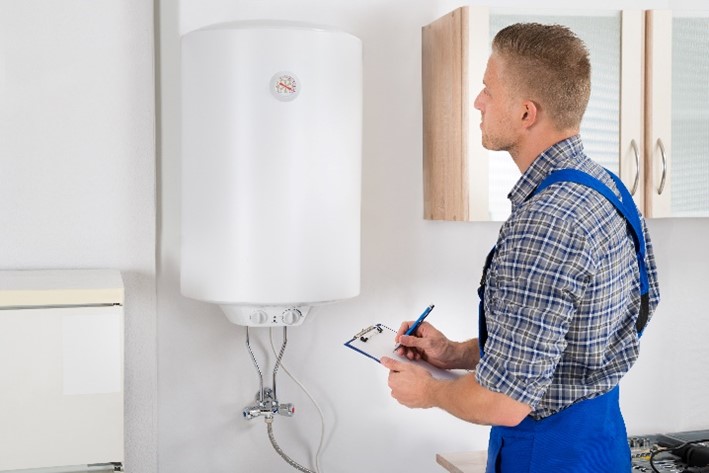How to Keep Your Home's Hot Water System in Good Condition
How to Keep Your Home's Hot Water System in Good Condition
Blog Article
We have stumbled upon this post relating to How to Maintain a Hot Water Heater in a Few Simple Steps directly below on the internet and felt it made good sense to discuss it with you on my blog.

Warm water is essential for daily comfort, whether it's for a revitalizing shower or washing meals. To ensure your hot water system runs successfully and lasts longer, routine upkeep is key. This post provides useful pointers and insights on exactly how to keep your home's hot water system to prevent disruptions and expensive fixings.
Introduction
Preserving your home's warm water system might seem complicated, but with a few basic actions, you can ensure it operates efficiently for several years to come. This guide covers whatever from recognizing your hot water system to DIY maintenance ideas and recognizing when to hire expert assistance.
Relevance of Maintaining Your Hot Water System
Routine upkeep not just expands the lifespan of your hot water system but likewise guarantees it runs successfully. Neglecting maintenance can result in reduced effectiveness, greater power costs, and also early failing of the system.
Indications Your Warm Water System Needs Maintenance
Understanding when your warm water system requires focus can prevent major problems. Watch out for signs such as inconsistent water temperature, unusual noises from the heater, or rusty water.
Flushing the Water Heater
Flushing your hot water heater removes sediment accumulation, enhancing performance and prolonging its life.
Checking and Replacing Anode Rods
Anode rods avoid rust inside the storage tank. Examining and replacing them when worn out is essential.
Facility Concerns Calling For Expert Help
Examples include major leaks, electrical issues, or if your water heater is constantly underperforming.
Regular Specialist Upkeep Conveniences
Specialist upkeep can consist of detailed examinations, tune-ups, and making sure compliance with security criteria.
Inspecting and Readjusting Temperature Level Settings
Adjusting the temperature level setups makes sure optimal efficiency and safety and security.
DIY Tips for Maintenance
You can execute numerous maintenance jobs on your own to keep your warm water system in leading condition.
Checking for Leakages
Frequently examine pipelines and links for leaks, as these can bring about water damage and higher expenses.
Understanding Your Warm Water System
Prior to diving into upkeep tasks, it's helpful to recognize the fundamental components of your warm water system. Usually, this includes the hot water heater itself, pipes, anode poles, and temperature controls.
Month-to-month Upkeep Tasks
Regular month-to-month checks can help capture minor concerns before they escalate.
Checking Pressure Alleviation Valves
Testing the stress safety valve ensures it operates properly and protects against extreme stress accumulation.
Shielding Pipes
Shielding hot water pipelines decreases warmth loss and can save power.
When to Call a Professional
While do it yourself maintenance is helpful, some issues require specialist proficiency.
Final thought
Normal maintenance of your home's warm water system is important for effectiveness, longevity, and expense financial savings. By following these ideas and understanding when to look for expert aid, you can ensure a trustworthy supply of hot water without unforeseen disruptions.
How to Maintain an Instant Hot Water Heater
Before tinkering with your hot water heater, make sure that it’s not powered on. You also have to turn off the main circuit breaker and shut off the main gas line to prevent accidents. Also turn off the water valves connected to your unit to prevent water from flowing into and out of the appliance. 2. When you’re done, you have to detach the purge valves’ caps. These look like the letter “T†and are situated on either side of the water valves. Doing so will release any pressure that has accumulated inside the valves while at the same time avoid hot water from shooting out and burning your skin. 3. When the purge valves’ caps are removed, you have to connect your hosing lines to the valves. Your unit should have come with three hoses but if it didn’t, you can purchase these things from any hardware or home repair shops. You can also get them from retail stores that sell water heating systems. Read the user’s manual and follow it to complete this task properly. When the hosing lines are connected, open the purge port’s valves. 4. You should never use harsh chemical cleaners or solutions when cleaning your unit. Make use of white vinegar instead. It should be undiluted and you’ll probably use about 2 gallons. 5. Now flush your water heater. This task should probably take about 40 minutes. We can’t give you specific directions for this because the procedure is carried out depending on the type, model and brand of your heater. With that being said, refer to the user’s manual. 6. When you’re done draining the unit, you have to turn off the purge port valves again. Remove the hosing lines that you earlier installed on each of the water valves. Put the valve caps (purge port) back in their respective places and be very careful so as not to damage the rubber discs that are found inside these caps. 7. Now that everything’s back in place, check your user’s manual again to find out how to reactivate your water heating system. 8. Once it is working, turn one of your hot water faucets on just to let air pass through the heater’s water supply pipes. Leave the tap on until water flows smoothly out of it. https://www.orrplumbing.com/blog/2014/september/how-to-maintain-an-instant-hot-water-heater/

Do you enjoy reading about How to Maintain a Hot Water Heater in a Few Simple Steps? Try to leave a remark further down. We will be happy to know your opinion about this content. We hope that you come back again in the future. Those who enjoyed reading our blog entry kindly remember to pass it around. Thank-you for going through it.
Here Report this page